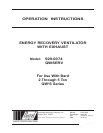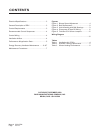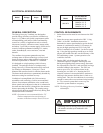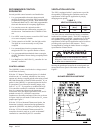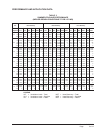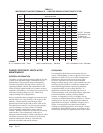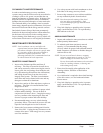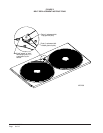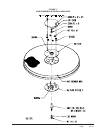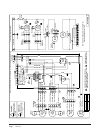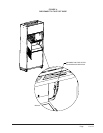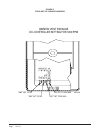
Manual 2100-533A
Page 3 of 12
GENERAL DESCRIPTION
The Energy Recovery Ventilator was designed to
provide energy efficient, cost effective ventilation to
meet I. A. Q. (Indoor Air Quality) requirements while
still maintaining good indoor comfort and humidity
control for a variety of applications such as schools,
classrooms, lounges, conference rooms, beauty salons
and others. It provides a constant supply of fresh air for
control of airborne pollutants including CO
2
, smoke,
radon, formaldehyde, excess moisture, virus and
bacteria.
The ventilator incorporates patented rotary heat
exchange state-of-the-art technology to remove both
heat & moisture and provides required ventilation to
meet the requirements of ASHRAE 62.1 standard.
It is designed as a single package which is factory
installed. The package consists of a unique rotary
Energy Recovery Cassette that can be easily removed
for cleaning or maintenance. It has two 15-inch
diameter heat transfer wheels for efficient heat transfer.
The heat transfer wheels use a permanently bonded dry
desiccant coating for total heat recovery.
Ventilation is accomplished with 2 blower/motor
assemblies each consisting of a drive motor and dual
blowers for maximum ventilation at low sound levels.
Motor speeds can be adjusted so that air is exhausted at
the same rate that fresh air is brought into the structure
thus not pressuring the building. The rotating energy
wheels provide the heat transfer effectively during both
summer and winter conditions.
NOTE: Operation is not recommended below 5°F
outdoor temperature because freezing of
moisture in the heat transfer wheel can occur.
CONTROL REQUIREMENTS
1. Indoor blower motor must be run whenever the ERV
is run.
2. Select the correct motor speed on the ERV. Using
Table 1 of the ERV Installation Instructions
determine the motor speed needed to get the desired
amount of ventilation air needed. For instance, do
not use the high speed tap on a ERV if only 200
CFM of ventilation air is needed. Use the low speed
tap. Using the high speed tap would serve no useful
purpose and would effect the overall efficiency of the
air conditioning system. System operation costs
would also increase.
3. Run the ERV only during periods when the
conditioned space is occupied. Running the ERV
during unoccupied periods wastes energy, decreases
the expected life of the ERV, and can result in a large
moisture buildup in the structure. The ERV can
remove up to 60 to 70% of the moisture in the
incoming air, not 100% of it. Running the ERV
when the structure is unoccupied allows moisture to
build up in the structure because there is little or no
cooling load. Thus, the air conditioner is not running
enough to remove the excess moisture being brought
in. Use a control system that in some way can
control the system based on occupancy.
NOTE: The Energy Recovery Ventilator is NOT a
dehumidifier.
ELECTRICAL SPECIFICATIONS
ledoMegatloVspmA
lortnoC
egatloV
4700-029802/0322.2V42
ledoM
ehthtiwesUroF
stinUgniwolloF
4700-029
C-,B-,A-S2WQ
C-,B-,A-S3WQ
C-,B-,A-S4WQ
C-,B-,A-S5WQ
IMPORTANT
Operating the ERV during unoccupied periods
can result in a build up of moisture in the
classroom.



